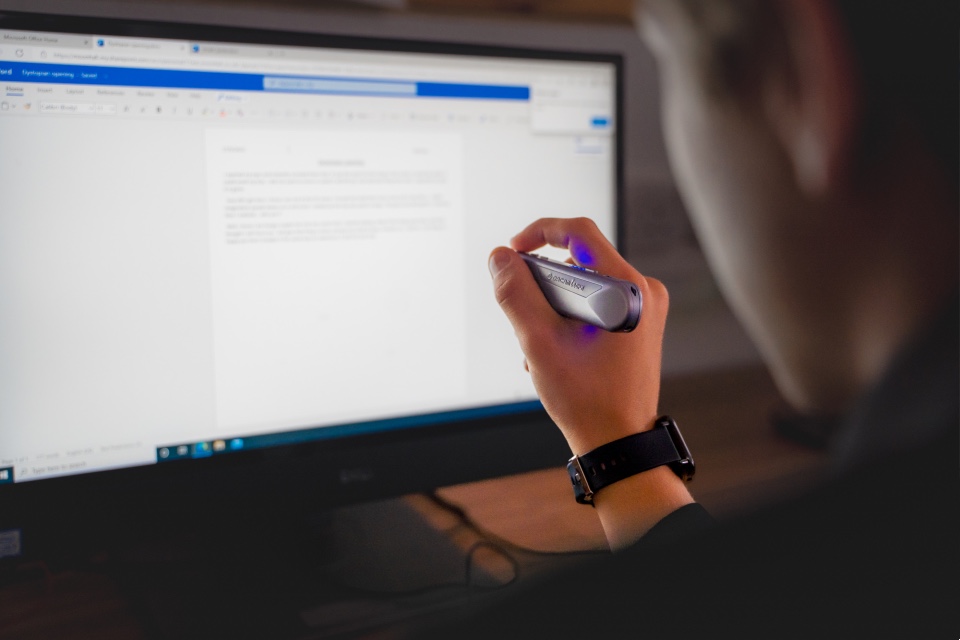By Irie Meltzer, UK Regional Director at OrCam Technologies
The number of students with special educational needs and disabilities (SEND) in further and higher education is growing. Education data shows that the number of students with a known disability has increased by 47 per cent since 2014/15. And statistics from 2019/20 reveal 332,300 UK higher education students reported that they had a disability.
When you are a student with learning challenges getting through higher education can be intimidating. The sheer volume of reading necessary for most courses is a major hurdle to face.
With rising diagnoses and an increased awareness of the challenges facing students with additional needs, education institutions have a role to play in ensuring students know that support is available. And that funding is too, so they have the right tools to improve their learning experiences.
The assistive technology available for students through funding
Today, students have access to several traditional supportive technologies. These include abbreviation expanders, electronic worksheets, graphic organisers, optical character recognition, portable word processors, and variable-speed tape recorders, among other tools and computer software.
While educational institutions may supply these technologies to students as part of their course, if this is not possible, students will have to fund it themselves. Although some software and accessibility tools can be free to download, hardware and more effective assistive technologies can be a big investment.
Without personal access to effective, modern assistive technology students will see an impact on their learning progression. This is heightened in further and higher education as so much time is spent away campus’ where additional support can be given.
Enabling tech access through government grants
To support the accessibility, reading and disability challenges for the estimated 332,300 higher education students throughout the UK, the Government set up the Disabled Students’ Allowance (DSA) which covers study-related costs for higher education students. This can be due to mental health problems, illness or learning disabilities. In the 2022 to 2023 academic year, undergraduate and postgraduate students can apply for up to £25,575 per year for support. DSA covers anything from specialist equipment such as laptops and computers to other disability-related study support.
The DSA is proving beneficial as a report commissioned by the Department for Education revealed that 73 per cent of DSA recipients reported that they received specialist software needed for their course. Further data shows that 60,600 full-time undergraduate students from England received DSA in 2019/20. This number increased from 47,300 in 2010/11 to 57,500 in 2014/15.
However, despite its availability, only 40 per cent of students had heard of DSA before starting their course. This shows the importance of increasing its awareness and the positive impact it can have on the learning experiences for students.
The power of assistive technology
For students with dyslexia and other reading challenges technology can help them overcome barriers to their learning and enable them to study independently. in and out of the classroom. Academic research has shown that assistive technology can improve reading and spelling aptitude – among other skills – helping them to reach their full potential. While also increasing a student’s self-reliance and sense of independence.
This reinforces the value of DSA and its role as an enabler. Helping to put technology in the hands of students. A typical DSA package allocated by an assessor will include a variety of different technologies such as a laptop, printer, scanner, copier, mouse and keyboard. These tools can help the student work more effectively. However, for those with dyslexia, more intuitive and personalised technology is needed to improve learning outcomes.
Higher education can be particularly demanding for students with dyslexia and other reading challenges. Having to review papers, books and documents can leave students with dyslexia fatigued, nauseous and experiencing headaches on a regular basis. Until recently, the only tools developed specifically for reading and comprehension difficulties were found on computers, which are not ideal when moving between teaching locations and completing home learning.
To address this, at OrCam Technologies we have created the OrCam Learn DSA, a fully DSA approved AI assistive learning platform, developed specifically to empower students with learning and reading challenges. The handheld digital companion tool, available via DSA, has proved beneficial to those with dyslexia, dyspraxia, and other learning challenges.
For example, the device has significantly improved the learning experience for mature student and dyslexic Paula Birch as she studies to become a children’s nurse at university. She can now use the OrCam Learn DSA to efficiently read the courses’ texts and complete her assignments in half the time.
Paula says: “The OrCam Learn DSA has transformed my academic experience. I used to spend hours re-reading text, but I can now process whole pages of information very quickly. Without needing any online connectivity – the solution allows me to save hours on my studies and instead spend more time with my daughter and family.”
Students who struggle with dyslexia and other reading challenges have to overcome many hurdles to progress through their courses. Assistive technology is proven to deliver positive outcomes for students but funding channels such as the DSA hold a fundamental role in giving them access to this technology.
Universities, colleges and other higher education organisations have a key part to play in increasing awareness of the support available to students. The aspiration should be to build an education system that is the most inclusive and accessible as it can be, on top of giving students a solid foundation to reach their full learning potential.






Leave a Reply